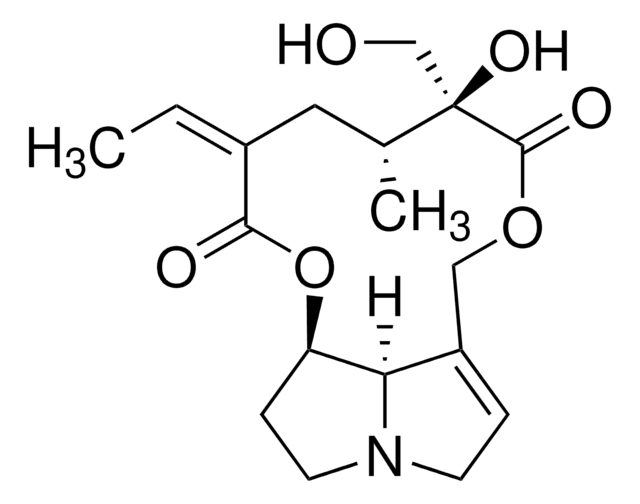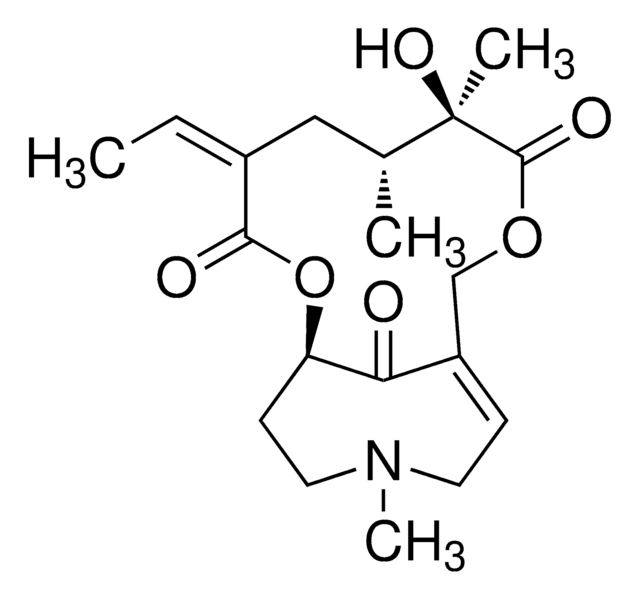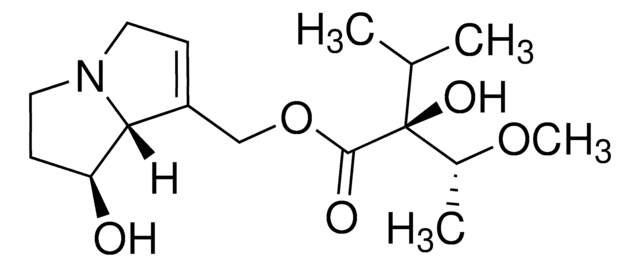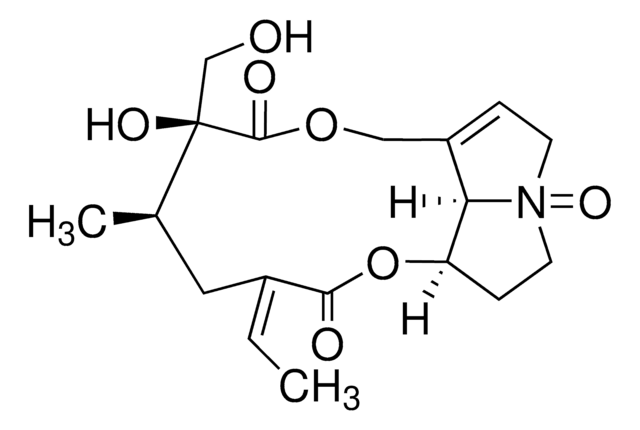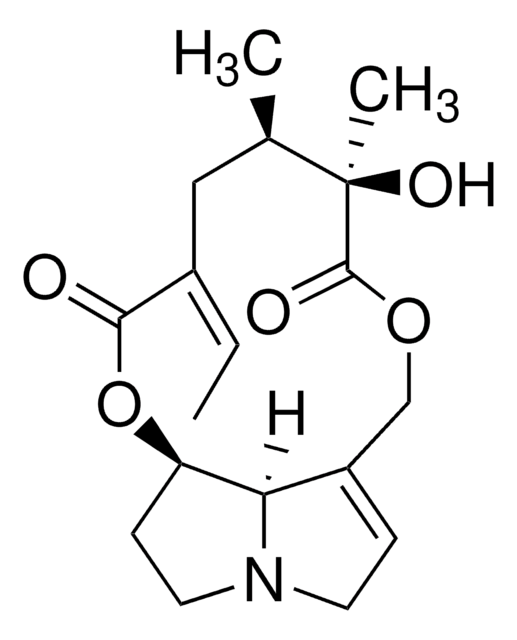R0382
Retrorsine
≥90% (HPLC), powder, retronecine-type pyrrolizidine alkaloid
Synonyme(s) :
Retrorsin, Senecionan-11,16-Dione, 12,18-Dihydroxy- (9CI), β-Longilobine, 12,18-Dihydroxysenecionan-11,16-dione
About This Item
Produits recommandés
product name
Retrorsine, ≥90% (HPLC)
Pureté
≥90% (HPLC)
Pf
208-211 °C (lit.)
Chaîne SMILES
C\C=C1\C[C@@H](C)[C@](O)(CO)C(=O)OCC2=CCN3CC[C@@H](OC1=O)[C@@H]23
InChI
1S/C18H25NO6/c1-3-12-8-11(2)18(23,10-20)17(22)24-9-13-4-6-19-7-5-14(15(13)19)25-16(12)21/h3-4,11,14-15,20,23H,5-10H2,1-2H3/b12-3-/t11-,14-,15-,18-/m1/s1
Clé InChI
BCJMNZRQJAVDLD-CQRYIUNCSA-N
Vous recherchez des produits similaires ? Visite Guide de comparaison des produits
Application
- as a mito-inhibitory pyrrolizidine alkaloid compound to induce necrotic liver injury in rats
- to induce hepatocellular injury in rats
- to arrest endogenous hepatocyte growth in mice
Actions biochimiques/physiologiques
Mention d'avertissement
Danger
Mentions de danger
Conseils de prudence
Classification des risques
Acute Tox. 2 Dermal - Acute Tox. 2 Inhalation - Acute Tox. 2 Oral
Code de la classe de stockage
6.1A - Combustible acute toxic Cat. 1 and 2 / very toxic hazardous materials
Classe de danger pour l'eau (WGK)
WGK 3
Point d'éclair (°F)
Not applicable
Point d'éclair (°C)
Not applicable
Équipement de protection individuelle
Eyeshields, Faceshields, Gloves, type P2 (EN 143) respirator cartridges
Certificats d'analyse (COA)
Recherchez un Certificats d'analyse (COA) en saisissant le numéro de lot du produit. Les numéros de lot figurent sur l'étiquette du produit après les mots "Lot" ou "Batch".
Déjà en possession de ce produit ?
Retrouvez la documentation relative aux produits que vous avez récemment achetés dans la Bibliothèque de documents.
Notre équipe de scientifiques dispose d'une expérience dans tous les secteurs de la recherche, notamment en sciences de la vie, science des matériaux, synthèse chimique, chromatographie, analyse et dans de nombreux autres domaines..
Contacter notre Service technique
